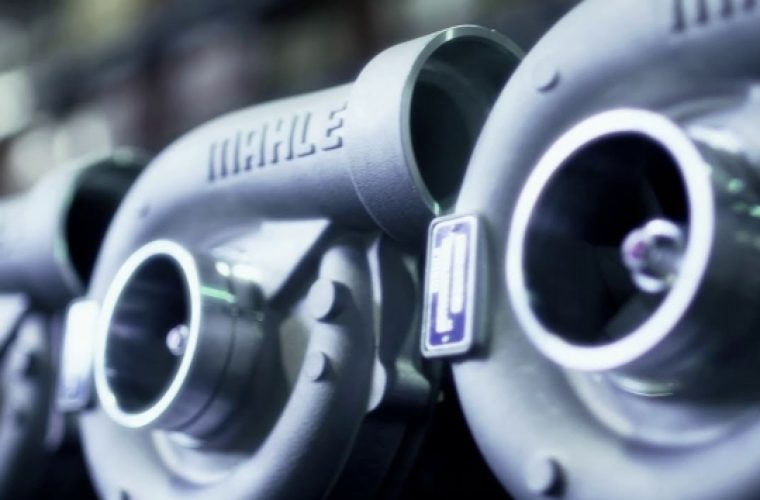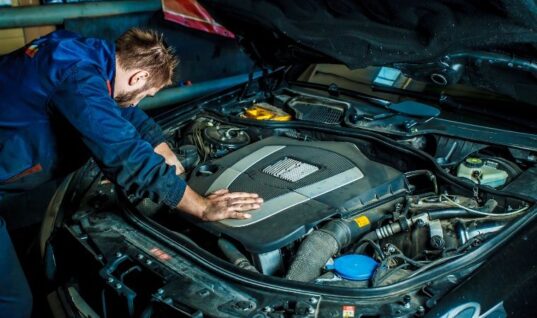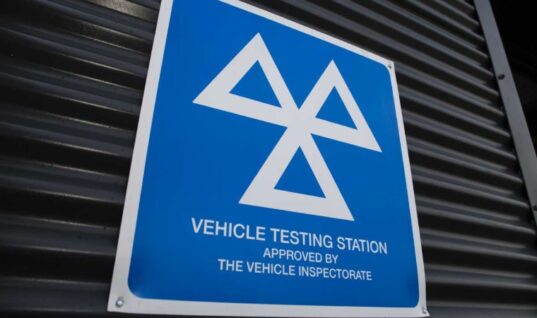Generally, turbocharger damage is caused by the engine’s peripheral components, rather than the turbocharger itself. Therefore, if the turbocharger is replaced and the actual cause of failure is not remedied, it will inevitably be damaged again.
Unfortunately, it is often only when the turbocharger is replaced and the symptoms remain, that a thorough investigation is undertaken, which is why MAHLE says it’s essential to identify the actual cause of damage for every failure.
Suspicious noises
When whistling noises occur immediately after installation, it is often hastily concluded that a crack in the turbocharger or a manufacturing defect is the cause. However, examination usually reveals something else:
- A gasket inserted the wrong way around (figure 1). This reduces the diameter and therefore also the flow rate, which can lead to whistling noises and/or a decrease in performance.
- Incorrect fit of the hoses/components of the charge air line. This can cause air to escape – and the whistling.
- The housing mounted incorrectly. On certain types of turbochargers, the compressor housing is adjusted via the mounting screws. If the screws are not tightened correctly, they can become loose during engine operation, which can cause audible scratching or whistling as the impeller strikes the housing.
- Metallic rattling or clanging can indicate a detached piece of metal in the exhaust manifold, which must be rectified immediately to avoid major turbocharger and consequential engine damage.
Blockages
Smoke emissions and loss of oil are among the most common reasons for an unnecessary turbocharger replacement, which is why some background knowledge is invaluable. Almost all series turbochargers have hydrodynamic bearings, where the oil acts to ‘separate’ the moving parts. An adequate supply and the correct removal of oil are therefore essential for the durability and operation of the turbocharger.
 If the oil supply is hindered or the oil pressure is too low, an adequate lubricating film cannot form and wear occurs between the shaft and the bushing (Fig. 2) resulting in turbocharger damage.
If the oil supply is hindered or the oil pressure is too low, an adequate lubricating film cannot form and wear occurs between the shaft and the bushing (Fig. 2) resulting in turbocharger damage.
 Clear indications for inadequate lubrication include a loose nut on the impeller, a broken shaft (Fig. 3), or discolouration due to high temperatures. If the defect is not remedied prior to the installation of a new turbocharger, then the replacement will also fail.
Clear indications for inadequate lubrication include a loose nut on the impeller, a broken shaft (Fig. 3), or discolouration due to high temperatures. If the defect is not remedied prior to the installation of a new turbocharger, then the replacement will also fail.
A blocked return line or excessive crankcase pressure can clog the oil return (Fig. 4) so oil can no longer flow out into the oil sump after lubricating the bearings and so accumulates in the bearing housing.
Fresh oil pumped to the bearing points must then somehow flow out of the bearing, but as the flow is blocked it finds another path and despite the sealing piston rings, it is forced into the compressor and turbine side, where it is carbonised or is burnt in the combustion chambers via the intake air and the exhaust system via the turbine.
Poor Performance
The turbocharger can also be blamed for poor performance. However, more likely culprits include:
- The exhaust gas system – The exhaust gas after treatment and recirculation systems create many contact points where throughput can be reduced. If the gases cannot flow freely, similar symptoms to a turbocharger fault can occur.
- The recirculation air valve – Cases of pronounced turbo lag or over-speeding could also be put down to a faulty turbocharger, when replacing the valve will solve the matter.
- The air mass flow meter – The flow meter determines the volume of air flowing into the engine. The engine control unit thus calculates the optimal quantity of fuel and additional values for the air-fuel ratio. Incorrect measurement can lead to poor performance and even to dry running, symptoms that could also indicate a defective turbocharger. However, measurement of the air flow meter values will help to identify the actual cause.
- Cracks in the air-guiding area – These can lead to unfiltered air entering into the system within specific speed ranges. The result is an inadequate air-fuel ratio, along with a noticeable lack of performance and gradual wear of all mechanical parts. A leak detection spray is recommended for quick identification of the leak points.
For more information or general advice, please contact the MAHLE Technical Team on 0845 6885006 or by email. You can find out all about MAHLE Aftermarket by using the ‘More Details’ button below.









